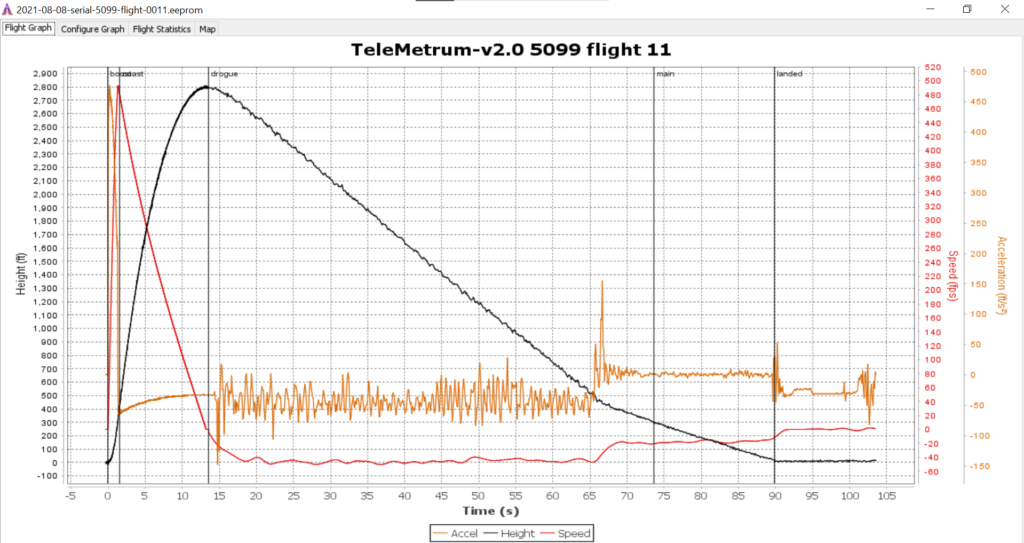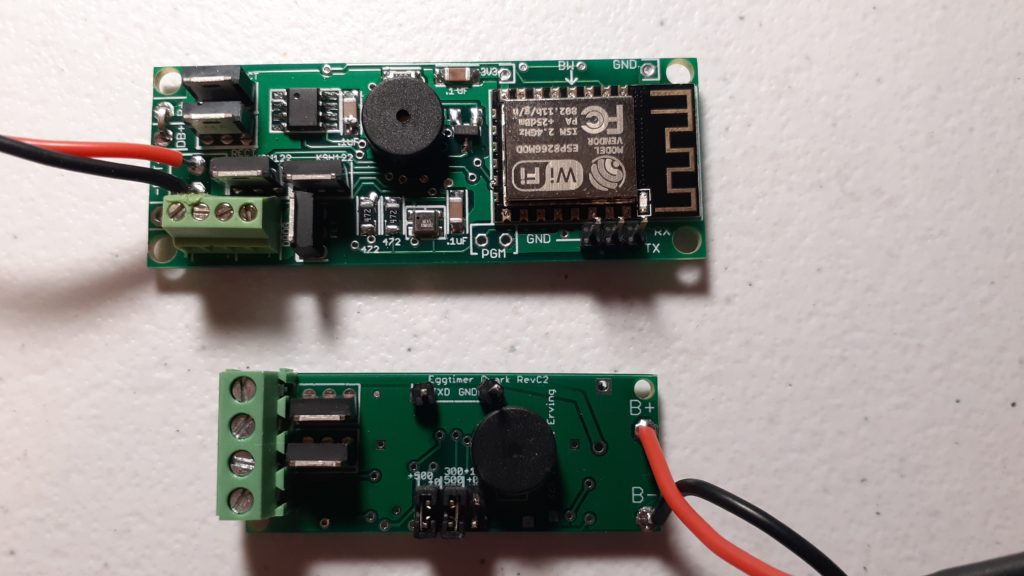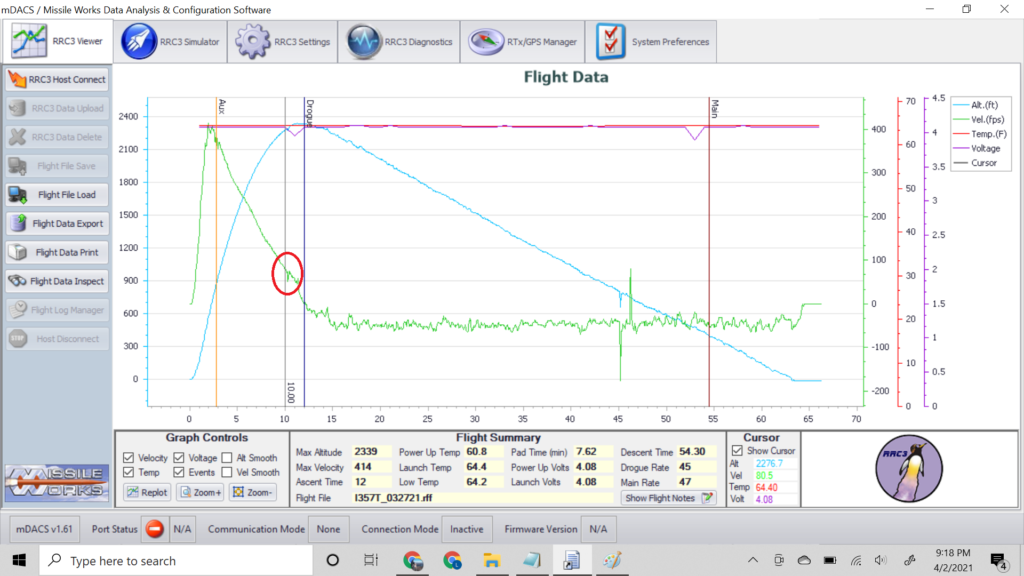Updated 11/16/21
High-Power Rocketry electronics are pricey. Even the most basic altimeters and flight computers run $50-$100 with the most expensive ones topping out at $400. However, a company called Eggtimer Rocketry exists, and they provide just the PCB, electronic components, and instructions, so that one may solder the altimeter themselves. This appealed to me after learning that electronics really aren’t so intimidating as I first thought. I realized this while watching Joe Barnard of BPS.space solder together flight computers of his own design in 2019.
My interest to delve more into the electronics was piqued as a result, so I purchased a few LED through-hole practice kits with the intent of assembling some Eggtimer Rocketry kits shortly thereafter. I never got around to it until early 2021 when I soldered a few surface-mount practice kits. I then attempted the Eggtimer Quark and Quantum with positive early results. The test campaign is ongoing and will flight test each a few times throughout 2021.
Eggtimer Quark
Test Flight 1 – 3/27/21
First flight of the Quark appears to have been a success! Flown on Miss Kenzie on an I357T, with an RRC3 as the backup altimeter, the drogue appeared to have deployed at apogee as planned. Unfortunately the main black powder charge, set to fire at 800ft (244m), lacked enough black powder to separate the rocket, so it landed under drogue only at 47ft/s (14m/s). Thankfully, the ground was soft from the previous week’s rainfall, so no damage was sustained.
However, all charges fired, and the flight data from the RRC3 running backup with drogue @ apogee +2s and main @ 400ft (122m) provided some additional clues. The RRC3 data below show the apogee charge fired exactly 12.0s into flight, therefore apogee was detected at exactly 10.0s in which a small velocity spike occurs, likely the Quark apogee charge firing.
Drogue charges all appeared to have fired properly. While the rocket failed to separate via the main ejection charges, the firings still jerked the rocket enough to show up on the flight data. An altitude and velocity jar occur at 799.5 ft, possibly due to ejection charge gases venting partially into the avbay.
Despite no direct main deployment, the Quark seems to be functional! I will test it again on a small mid-power rocket this summer, in which the Quark will remain at low altitudes without a redundant backup altimeter to verify complete functionality on its own. Quantum will be up next, too!
Test Flight 2 – 7/10/21
The second flight of the Quark looked good. I built a new rocket for the purpose of testing electronics without redundancy. Easy on the Wallet Too is a Mach 1 Rocketry Speed Demon that flew on a G40-10W as a solo test flight of the Quark. Although I lost sight of it after burnout, it landed just north of the range under both chutes, so I suspect the Quark did its job properly. Altitude measured 1654ft (504m). I plan on doing another solo flight as a final validation, hopefully with eyes on it all the way this time.
Test Flight 3 – 8/8/21
The third flight of this Quark was another solo flight (no other altimeter backup), and it went great! There was no backup motor ejection charge this time either. Altitude measured 2146ft (654m), so with that, I am confident to clear the Quark for all future flights! It’s a little cumbersome to install in an avbay because it lacks battery or switch terminal blocks, so I’ll probably use it just for small single-altimeter dual deploy flights.
Eggtimer Quantum
I had a bit of trouble getting the Quantum ground tested. It booted up properly but wouldn’t read continuity on both Drogue and Main at the same time. Disconnecting one terminal would provide continuity on the other and vice versa, but never continuity on both simultaneously. Posts on the Rocketry Forum indicate these problems are usually due to the stubby leads on the optoisolators, so I resoldered those about 4 times, but no luck. I finally reached out to Cris Erving at Eggtimer, and it turns out I’d been using a 1S li-po battery used with Altus Metrum altimeters. The Quantum needs 2S cells. $40 later for JST connectors, 2 li-pos, and a li-po charger, I was in business. Hopefully there isn’t any heat damage to the board from my repeated resoldering attempts.
Test Flight 1 – 8/8/21
The first flight of the Quantum appears to have gone well! It flew with a backup TeleMetrum on Miss Kenzie to 2833ft (863m). Both apogee and main charges fired, and while I couldn’t distinguish the apogee charge from the backup altimeter’s, I know the main fired at 500ft as planned. I’ll fly it for its first solo flight next month at Airfest inside Easy on the Wallet Too, since the Quark’s test campaign ended today with its 3rd flight.



Test Flight 2 – 10/10/21
The second flight of the Quantum was also the first solo flight going up on Easy on the Wallet Too on a G78G. Nominal dual deploy, reaching an altitude of 1921ft (586m) on the way up.
Test Flight 3 – 11/14/21
The third flight of the Quantum another first solo flight, also flying on Easy on the Wallet Too, this time on a G77R. Altitude of 1666ft (508m), but unfortunately the aft section of the rocket separated at the shock cord and wasn’t found. However, the 2021 test campaign of these 2 altimeters is complete! Great project throughout the year.





